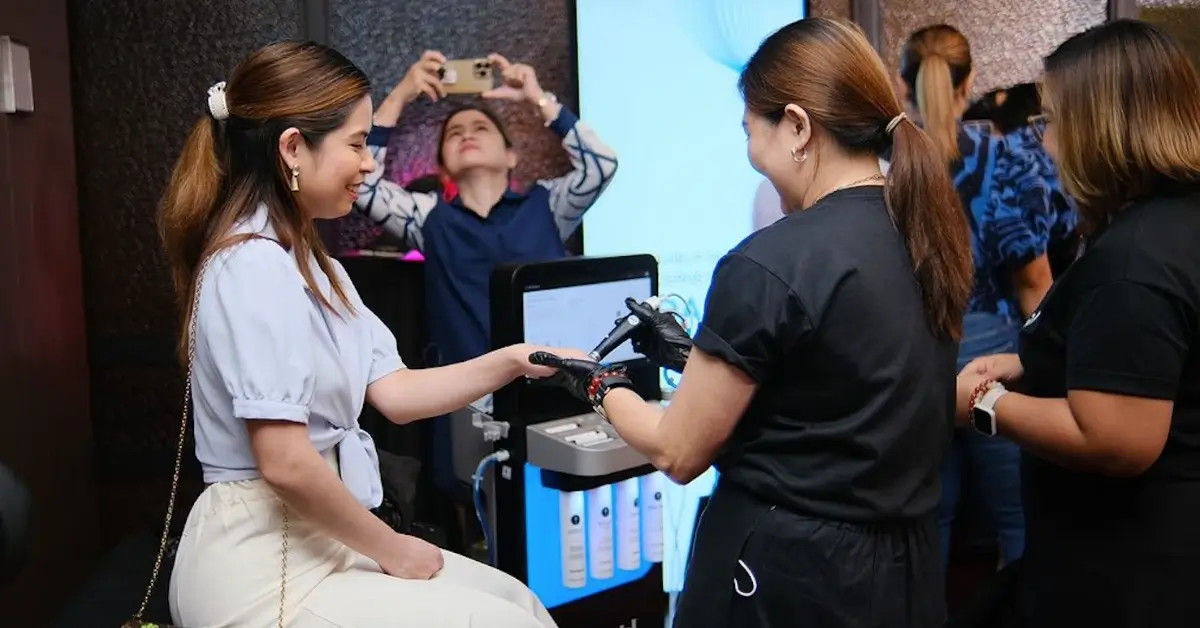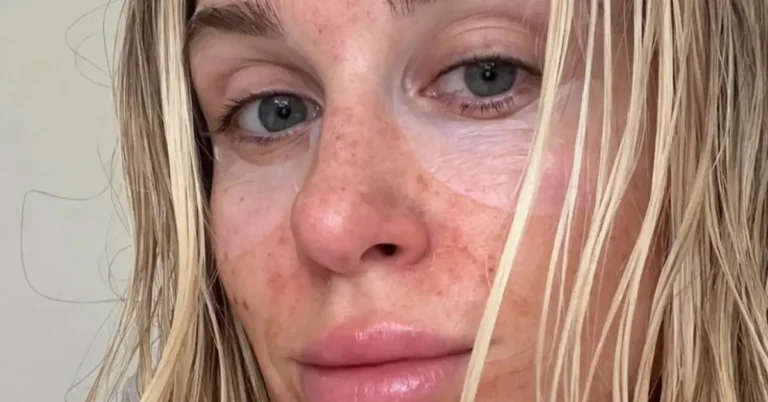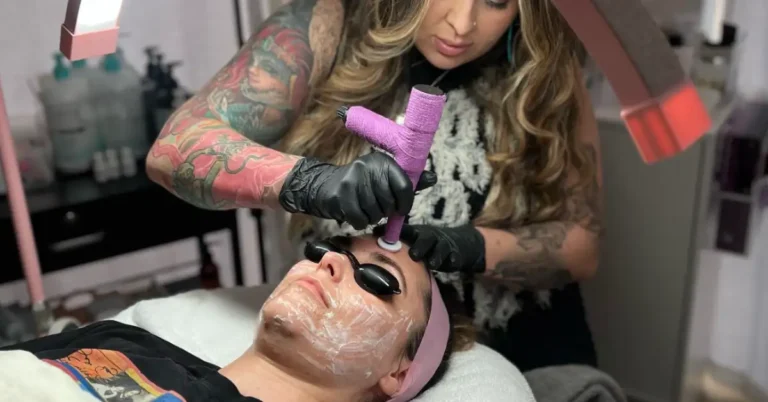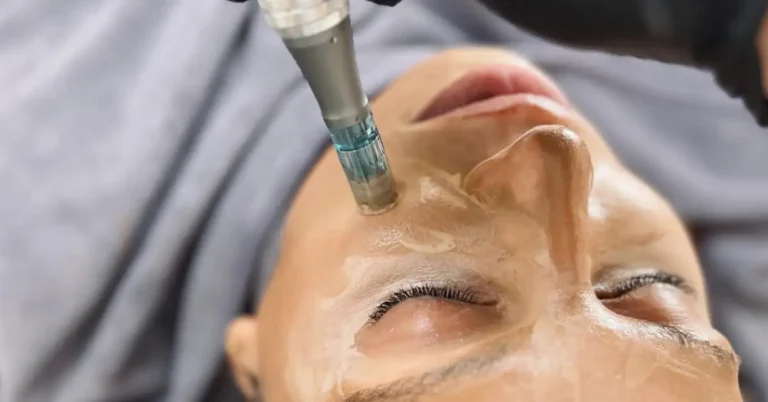Tired of the relentless fight against acne and endlessly trying different solutions without any true success? I understand, having battled with acne for a long time myself. However, let me introduce you to a groundbreaking method: hydrafacial for acne.
This revolutionary multistep facial treatment isn’t just a promise; it’s a solution. It doesn’t just claim to reduce acne, but also holds the power to transform your skin’s texture and tone. Get ready to bid farewell to acne woes and welcome a radiant, blemish-free complexion. Stick with me as I unveil the true potential of hydrafacial for acne.
Table of Contents
Hydrafacial for Acne
So, what exactly is a hydrafacial? It’s a patented hydra-dermabrasion technology that combines exfoliation, extraction, and hydration in one treatment. The process begins with a thorough cleansing and exfoliation of the skin, followed by a gentle suction that removes impurities and debris from the pores. Finally, a serum is applied to hydrate and nourish the skin, leaving it looking and feeling refreshed.
While there are no clinical studies that specifically highlight the benefits of hydrafacial for acne, many dermatologists and skincare experts swear by its effectiveness. In fact, with a series of treatments, hydrafacial benefits include a more even tone, reduced fine lines and wrinkles, smaller pores, and clearer skin, with less acne.
If you’re looking for a non-invasive, gentle treatment that can help improve your skin’s overall health and appearance, hydrafacial for acne may be worth considering.
Understanding Acne

Acne is a common skin condition that affects millions of people worldwide. It occurs when hair follicles become clogged with oil and dead skin cells, leading to the formation of pimples, blackheads, and whiteheads. While acne is most commonly associated with teenagers, it can affect people of all ages.
I have struggled with acne for years, and it has been a constant source of frustration and embarrassment for me. I have tried countless treatments, from over-the-counter creams to prescription medications, but nothing seemed to work. That is until I discovered hydrafacial for acne.
Hydrafacial is a multi-step facial treatment that includes exfoliating, extracting, and hydrating the skin. It is a gentle and non-invasive treatment that can help to improve the appearance of acne-prone skin. During the treatment, a resurfacing wand is used to exfoliate the skin and remove impurities, while a hydrating serum is applied to nourish and protect the skin.
Pro Tip: Avoid picking at your acne. I know it can be tempting to squeeze and pop pimples, but doing so can actually make the problem worse by spreading bacteria and causing inflammation.
If you are struggling with acne, I highly recommend giving hydrafacial a try. Not only is it an effective treatment for acne-prone skin, but it is also a relaxing and enjoyable experience. For more information on hydrafacial for acne, check out this article from Glam.
What is HydraFacial?
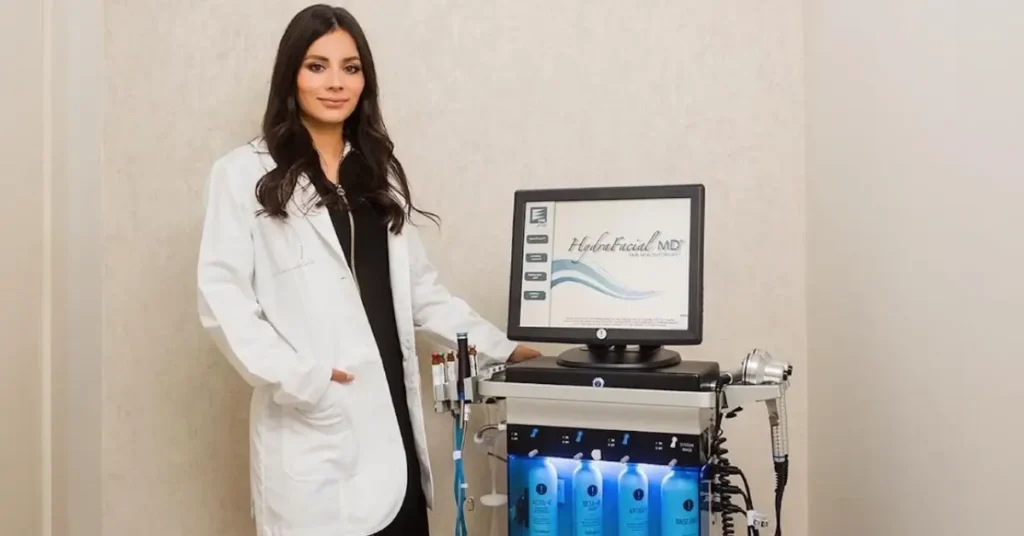
As someone who has struggled with acne for years, I’m always on the lookout for new treatments that can help me achieve clearer, smoother skin. That’s why I was excited to try HydraFacial, a non-invasive facial treatment that’s become increasingly popular in recent years.
So, what is HydraFacial, exactly? At its core, it’s a multistep facial treatment that involves cleansing, exfoliation, pore extraction, and the infusion of customized serums into the skin. The treatment is designed to deeply hydrate and protect the skin, leaving it looking and feeling rejuvenated.
One of the things I love about HydraFacial is that it’s safe for all skin types and tones. Whether you have dry, oily, or combination skin, or you’re dealing with issues like acne or hyperpigmentation, HydraFacial can be customized to meet your unique needs.
During the treatment, a HydraFacial machine is used to gently exfoliate the skin and remove dead skin cells, while also infusing the skin with a range of serums that are tailored to your specific concerns. These serums can include ingredients like hyaluronic acid, peptides, and antioxidants, all of which work together to deeply hydrate and protect the skin.
If you’re interested in trying HydraFacial for yourself, I highly recommend doing some research to find a reputable provider in your area. And as always, be sure to talk to your dermatologist or skincare professional before trying any new treatments or products.
Hydrafacial for Acne: How it Works
ALL ABOUT #HYDRAFACIAL FOR ACNE SCARS:https://t.co/ji4H93jXco pic.twitter.com/mgt8yoJFwb
— ICONIC SKIN CLINIC (@ICONICSKIN) September 24, 2021
As someone who has struggled with acne, I know how frustrating it can be to find a treatment that actually works. That’s why I was excited to learn about the benefits of hydrafacial for acne-prone skin. This professional facial treatment is designed to cleanse, exfoliate, and hydrate your skin, all while targeting acne and other common skin concerns.
During a hydrafacial treatment, a wand is used to gently cleanse and exfoliate the skin, preparing it for the extraction that occurs through painless suction. This helps to remove impurities, dead skin cells, and excess oil that can clog pores and contribute to acne.
The next step involves the infusion of customized serums into the skin, for deep hydration and antioxidant protection. These serums can be tailored to address specific skin concerns, such as acne, hyperpigmentation, or fine lines and wrinkles.
One of the key benefits of hydrafacial for acne-prone skin is that it can help to reduce the appearance of acne and prevent future breakouts. By removing impurities and excess oil from the skin, hydrafacial can help to unclog pores and reduce inflammation, which are two common factors that contribute to acne. The infusion of customized serums can also help to nourish and protect the skin, helping to prevent future breakouts.
In addition to its acne-fighting benefits, hydrafacial is also known for its ability to improve overall skin health and appearance. By exfoliating and hydrating the skin, hydrafacial can help to improve texture, tone, and radiance, leaving your skin looking and feeling refreshed and rejuvenated.
Pre HydraFacial Care
Before getting a HydraFacial for acne, there are a few steps you can take to ensure the best possible results. As someone who has struggled with acne for years, I’ve found that following these pre-treatment steps has made a significant difference in the outcome of my HydraFacial sessions.
Cleanse Your Skin
It’s essential to have clean skin before your HydraFacial treatment. Make sure to cleanse your face thoroughly, removing any makeup, dirt, or oil. I recommend using a gentle cleanser that won’t dry out your skin. This way, your skin is free of any debris that could interfere with the HydraFacial’s effectiveness.
Avoid Sun Exposure
It’s best to avoid sun exposure for at least 24 hours before your HydraFacial treatment. Sunburned or tanned skin can be more sensitive during the treatment, and the HydraFacial wand may cause discomfort. If you must be in the sun, make sure to wear a broad-spectrum sunscreen with an SPF of at least 30.
Stay Hydrated
Drinking plenty of water is crucial to keep your skin hydrated and healthy. Make sure to drink at least eight glasses of water a day, especially in the days leading up to your HydraFacial treatment. This way, your skin will be more receptive to the HydraFacial’s hydrating effects.
Procedure of Hydrafacial Treatment
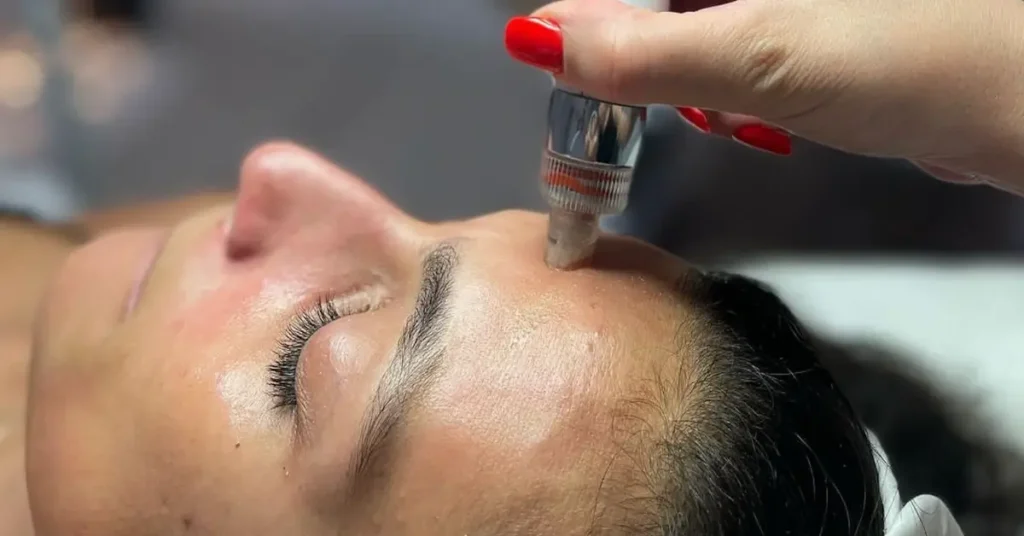
If you’re looking for a non-invasive, gentle, and effective way to treat acne, a HydraFacial might be just what you need. The HydraFacial treatment is a three-step process that works to deep-clean, exfoliate, and hydrate your skin. It’s a professional procedure that can help treat a variety of skin conditions, including acne.
During the treatment, the HydraFacial machine uses a unique spiral suction tip to remove dead skin cells and other impurities from your skin. The tip also delivers a specially formulated serum that hydrates and nourishes your skin. The serum is customized to your skin’s specific needs, so it can help reduce inflammation and redness associated with acne.
The three steps of the HydraFacial treatment are:
- Cleanse and exfoliate: The first step involves using a gentle cleanser and exfoliating solution to remove dirt, oil, and dead skin cells from your skin. This step preps your skin for the next steps of the treatment.
- Extract and hydrate: The second step involves using the unique spiral suction tip to extract impurities from your skin, such as blackheads and whiteheads. At the same time, the tip delivers a hydrating serum that nourishes your skin and helps reduce inflammation.
- Fuse and protect: The final step involves fusing the hydrating serum into your skin to lock in moisture and protect it from environmental damage. This step leaves your skin feeling soft, smooth, and hydrated.
I’ve personally had several HydraFacial treatments for my acne-prone skin in the past, and I can say that it’s a gentle and effective way to improve the appearance of your skin. It costs more money than many other treatments, but I think it’s really worth it.
Post Hydrafacial Care
After receiving a HydraFacial treatment for acne, it’s important to take proper care of your skin to maintain the results. Here are some tips for post-treatment care:
- Avoid touching your face for at least 24 hours after the treatment. Your skin will be sensitive and touching it can cause irritation or breakouts.
- Stay hydrated by drinking plenty of water. This helps to flush out toxins and keep your skin looking healthy.
- Apply a gentle moisturizer to your skin to help it recover from the treatment. Look for a moisturizer that is non-comedogenic, meaning it won’t clog your pores.
- Wear sunscreen with at least SPF 30 to protect your skin from UV damage. This is especially important after a HydraFacial treatment, since your skin may be more sensitive to the sun.
- Avoid using any harsh skincare products, such as those containing salicylic acid, benzoyl peroxide, or retinoids, for at least 48 hours after the treatment. These can further irritate your skin and undo the benefits of the HydraFacial.
Pro Tip: To maintain the results of your HydraFacial treatment, consider getting regular treatments every 4-6 weeks. This can help to keep your skin clear and healthy.
Benefits of HydraFacial for Acne
As someone who has struggled with acne for years, I have tried countless treatments and products to try and improve my skin. However, nothing has worked as well as HydraFacial for acne. Here are some of the benefits I have experienced:
- Deep Cleansing: HydraFacial uses a patented Vortex-Fusion technology to deeply cleanse the skin and remove impurities. This is especially important for acne-prone skin, as clogged pores can lead to breakouts.
- Exfoliation: The treatment also includes gentle exfoliation, which helps to remove dead skin cells and promote cell turnover. This can help to prevent future breakouts and improve the overall texture and tone of the skin.
- Customizable Serums: HydraFacial also allows for the use of customizable serums, which can be tailored to your specific skin concerns. For acne-prone skin, a serum containing salicylic acid or other acne-fighting ingredients can be used to help clear up breakouts.
- Reduced Inflammation: The treatment can also help to reduce inflammation, which is a common symptom of acne. This can help to calm redness and irritation, and make acne less noticeable.
- No Downtime: Unlike some other acne treatments, HydraFacial requires no downtime. You can immediately go back to your normal activities after the treatment, making it a convenient option for busy people.
Pro Tip: To get the most out of your HydraFacial treatment, make sure to follow up with a good skincare routine at home. This can include using a gentle cleanser, moisturizer, and sunscreen, as well as any additional acne-fighting products recommended by your skincare professional.
Potential Side Effects
As with any skincare treatment, there are potential side effects to consider. However, HydraFacial is generally considered safe and well-tolerated by most people. Here are some possible side effects to be aware of:
- Redness and irritation: After the treatment, you may experience some redness and irritation on your skin. This is normal and should subside within a few hours.
- Breakouts: While HydraFacial is designed to help treat acne, it’s possible that you may experience some breakouts after the treatment. This is because the treatment can bring impurities to the surface of your skin, which may result in temporary breakouts.
- Sensitivity: If you have sensitive skin, you may experience some discomfort during the treatment. However, your skincare professional can adjust the treatment to make it more comfortable for you.
- Allergic reactions: While rare, it’s possible to have an allergic reaction to one of the products used during the treatment. If you have a history of allergies, be sure to let your skincare professional know before the treatment.
It’s important to note that these side effects are generally mild and temporary. Most people are able to resume their normal activities immediately after the treatment. If you have any concerns about potential side effects, be sure to discuss them with your skincare professional before the treatment.
Cost and Accessibility

As someone who has struggled with acne for years, I know how frustrating it can be to find a treatment that works. That’s why I was excited to learn about HydraFacial, a non-invasive skincare treatment that promises to improve the appearance of acne-prone skin. But before I booked my first appointment, I wanted to know more about the cost and accessibility of this treatment.
First things first: how much does a HydraFacial for acne cost? According to a RealSelf article, the average cost of a HydraFacial treatment is $180, with prices ranging up to $300.
I usually paid about $215 for my HydraFacial treatments
While this may seem steep, it’s important to remember that this treatment is performed by a licensed skincare professional and uses patented technology to cleanse, extract, and hydrate the skin. Plus, many HydraFacial providers offer package deals or monthly memberships that can help make the cost more manageable.
Another factor to consider is the accessibility of HydraFacial for acne. While this treatment is available at many medical spas and dermatology offices, it may not be covered by insurance and may not be available in all areas.
However, with the rise of telemedicine and virtual consultations, it’s becoming easier to connect with skincare professionals from the comfort of your own home. Some HydraFacial providers even offer virtual consultations to help determine if this treatment is right for you.
My Advice: Before booking a HydraFacial for acne, be sure to do your research and read reviews from other patients who have undergone this treatment. This can help you get a better idea of what to expect and whether this treatment is worth the cost.
Alternatives to Hydrafacial
While Hydrafacial is an effective treatment for acne-prone skin, there are other alternatives that you can consider. Here are some of the options you might want to explore:
Chemical Peels
Chemical peels are a popular alternative to Hydrafacial. They work by removing dead skin cells using salicylic acid and alpha hydroxy acid. Chemical peels can help reduce the appearance of acne scars and improve skin texture. They are also effective in treating hyperpigmentation and sun damage.
Microdermabrasion
Another alternative to Hydrafacial is microdermabrasion. This treatment uses a special device to exfoliate the skin and remove dead skin cells. Microdermabrasion can help improve skin texture and reduce the appearance of fine lines and wrinkles. It is also effective in treating acne scars and hyperpigmentation.
Laser Therapy
Laser therapy is another option that you might want to consider. This treatment uses a laser to target the bacteria that cause acne. Laser therapy can help reduce the appearance of acne scars and improve skin texture. It is also effective in treating hyperpigmentation and sun damage.
My Personal Experience
As someone who has struggled with acne for years, I have tried many different treatments. While Hydrafacial is effective, I have found that chemical peels and microdermabrasion work better for my skin. These treatments have helped reduce the appearance of my acne scars and improve my skin texture.
Finding a Certified HydraFacial Practitioner
If you’re interested in trying HydraFacial for acne, it’s important to find a certified practitioner who can provide the treatment safely and effectively. Here are a few tips to help you find a qualified HydraFacial practitioner:
- Check the HydraFacial website: The official HydraFacial website has a “Find a Provider” tool that allows you to search for certified practitioners in your area. Simply enter your location and the tool will provide a list of nearby providers.
- Read reviews: Before choosing a practitioner, it’s a good idea to read reviews from other patients who have received HydraFacial treatments. Look for reviews that specifically mention acne and pay attention to the overall satisfaction of the patients.
- Ask for credentials: When you visit a practitioner for a consultation, don’t be afraid to ask about their credentials and experience with HydraFacial. A qualified practitioner should be able to provide you with information about their training and certifications.
- Consider my personal experience: I have struggled with acne for years and have tried countless treatments with little success. However, after receiving HydraFacial treatments from a certified practitioner, I have seen a significant improvement in my skin’s appearance and texture.
Pro Tip: If you’re on a tight budget, consider looking for HydraFacial deals or discounts on websites like Groupon. However, be sure to research the provider and read reviews before purchasing a deal.
Hydrafacial for Acne: A Recap
As someone who has struggled with acne for years, I know how frustrating it can be to find a treatment that actually works. That’s why I was excited to try hydrafacial, a non-invasive facial treatment that claims to help with acne and other skin issues.
Here are the most important things I learned about hydrafacial for acne:
- Hydrafacial is a multi-step facial treatment that involves cleansing, exfoliation, pore extractions, and the infusion of customized serums into the skin. This process can help to unclog pores, reduce inflammation, and improve overall skin texture and appearance.
- Unlike some other facial treatments, hydrafacial is gentle and non-irritating, making it a good option for people with sensitive skin or those who are prone to acne breakouts.
- Hydrafacial can be customized to address specific skin concerns, including acne. By using specialized serums and treatments, hydrafacial can help to reduce the appearance of acne scars, prevent future breakouts, and improve overall skin health.
- While hydrafacial can be an effective treatment for acne, it may not be suitable for everyone. Some people may experience mild redness or irritation after the treatment, and it may not be suitable for those with severe or cystic acne.
Overall, I found that hydrafacial was a great option for improving my acne-prone skin. Here are some pros and cons of the treatment:
| ✅ Pros: | ❌ Cons: |
| Gentle and non-irritating | May not be suitable for those with severe or cystic acne |
| Customizable to address specific skin concerns | Can be expensive, especially if done regularly |
| Can help to reduce the appearance of acne scars and prevent future breakouts |
FAQ
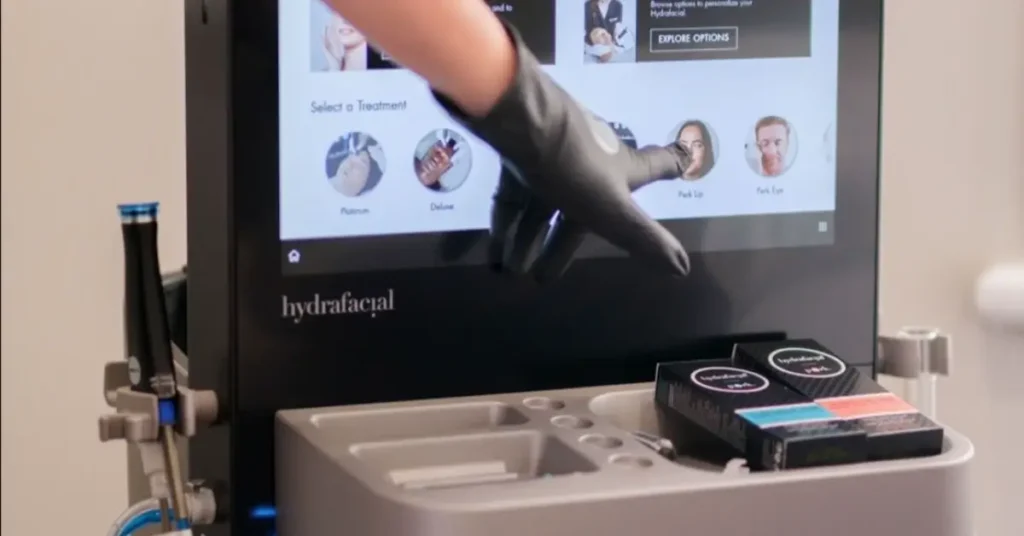
Is a Hydrafacial good for acne?
Yes, a Hydrafacial can be effective for acne. It deeply cleanses, extracts impurities, and infuses skin with hydrating serums, reducing breakouts and improving skin texture.
Do Hydrafacials clear your skin?
Yes, Hydrafacials can help clear your skin. They cleanse, exfoliate, and hydrate, reducing blemishes, improving tone, and leaving skin clearer and more radiant.
What is the disadvantage of Hydrafacial?
One disadvantage of Hydrafacial can be its cost, as it’s typically more expensive than some other facials. Additionally, results may require ongoing treatments for maintenance.
How long do results of Hydrafacial last?
The results of a Hydrafacial can last for 4-6 weeks, with improvements in skin texture and tone. However, for longer-lasting effects, regular treatments are recommended, typically on a monthly basis.
Can Hydrafacials go wrong?
Yes, while rare, Hydrafacials can go wrong. Possible issues include skin irritation, redness, or an adverse reaction to the serums used. It’s essential to choose a skilled provider for safe treatments.
If you liked this blog article about the question: Hydrafacial for Acne: The Ultimate Solution?, don’t forget to leave us a comment down below to tell us about your experience with it.

